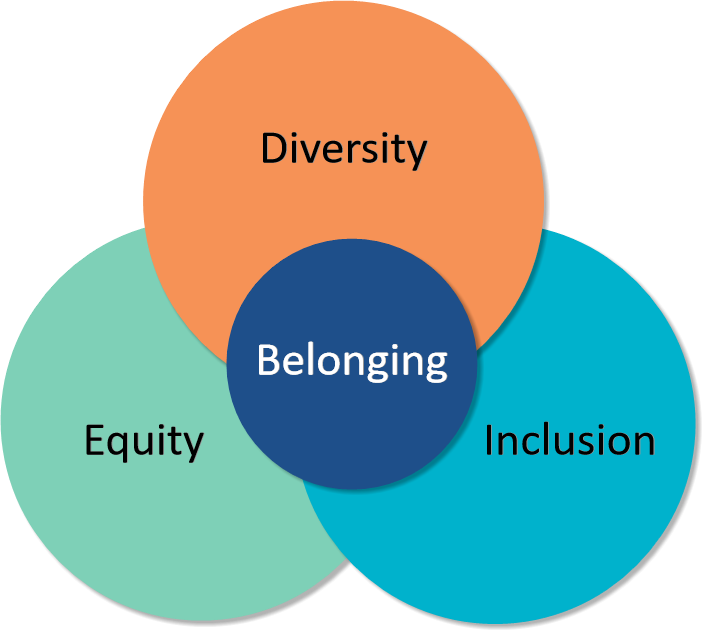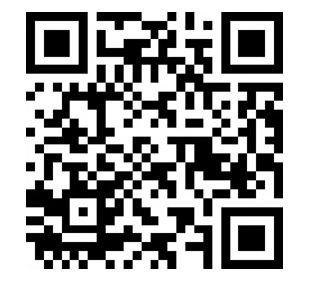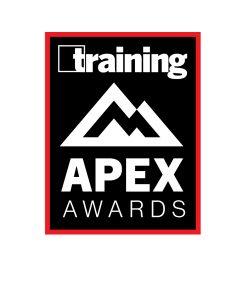LIMBACH HOLDINGS, INC.’S FOUNDATIONS ONBOARDING PROGRAM
By Kate Mistry, AVP/Director, Learning & Engagement, Limbach Holdings, Inc.
Let’s face it. We’ve all felt the sting of talent walking out the door, especially within these last few tumultuous years. [Thank you very much, Global Pandemic and the ensuing Great Resignation.] When we saw our 2020 attrition numbers, we knew something had to be done to combat this reality. For us, that meant tackling one of the biggest precursors to an employee’s satisfaction and retention: onboarding.
According to the Center for Creative Leadership (CCL), 1 in 3 new hires quit within 90 days of starting at a new company. There is no doubt that onboarding sets the tone for an employee’s engagement, career mobility, and overall satisfaction. But we were already facing an uphill battle. The construction industry is not a beacon of hope when it comes to onboarding standards; most organizations in this sector have checklists and maybe some eLearning that constitute their entire onboarding process. Even as a small Learning team of three, we saw the opportunity in front of us and knew we wanted to do more.
So we set to work. We did our research and dedicated one team member to the oversight of a new, immersive Foundations program. Four months later, we had our structure and were ready to pilot.
Program Details
Foundations includes pre- and post-boarding work led by our Learning program manager, as well as three days of interactive virtual seminars and resource exploration. In the pre-boarding phase, the Learning program manager works closely with the local business units to identify and equip qualified team partners to support the new hires in their technical day-to-day. She also works with each leader to build a customized 30-60-90-day plan for the new hire that includes position-specific goals and company-wide expectations and resources. Hiring managers and local Human Resources administrators join a “what to expect” virtual session to prepare them for their new hire starting each month.
New hires also are assigned an individual to fulfill the role of a “team partner.” Team partners are individuals who are designated at the local level to help support the new hire, acquire technical knowledge in collaboration with their direct supervisor, and also to serve as an ongoing resource to support the new hire. Team partners also are engaged in a “what to expect session.”
All content for the new hire’s first three days with us was created by our Learning team and is delivered virtually by company subject matter experts (SMEs) and our Learning program manager. This week includes virtual sessions on the company’s values and structure, benefits, safety, learning opportunities, as well as an overview of major position-relevant systems/platforms, and time for self-guided exploration, reflection, and completion of mandatory compliance courses via our learning management system.
We also engage our C-suite. Each month, a different C-suite member participates in a 45-minute seminar called “C-Suite Meet & Greet.” In this seminar, the C-suite member provides a brief life and work history and then discusses organizational goals and strategy with the new hires, as well as gets to know each new employee.
In addition to these general seminars, we decided to use this time to better understand our new hires and in doing so give the hiring managers insight into their new team member. Our Learning program manager leads all new hires in an interactive personality and work style reflection seminar. Post-boarding includes personalized e-mails to each Hiring manager with the details of their new hire’s work style and personality, plus general feedback from our Learning program manager on the new hire’s compatibility and fit with the organization as witnessed that week. The Learning program manager and the regional Human Resources business partners continue checking in with new hires after this first week to ensure new hire satisfaction and accountability in following the 30-60-90 plan at regular intervals and through capturing survey and qualitative data to continue improving the program and new hire experience.
Gaining Leadership Buy-In
In order for this program to work well, we had to gain buy-in from all senior leaders and executives. One of the biggest challenges we faced was ensuring we had capacity to run a program of this magnitude in addition to all of our other duties. To overcome this challenge, we pitched the benefits of utilizing a monthly hiring cycle, instead of hiring whenever the need arose. This plan meant our HR operations, Recruiting team, and business unit leaders had to work together to proactively and strategically plan for their hiring needs.
Results
Since instituting this formal Onboarding program with these major changes to company hiring practices, our new hire Net Promoter Score has consistently been above 98 percent, and we’ve seen a 66 percent decrease in voluntary new hire attrition.
The 150-plus new hires who have joined our company since instituting this program in 2021 have helped us continue to make Foundations better, so we can provide the best environment for our newest talent.
THE KEY TO BELONGING: SOCIAL AND EMOTIONAL LEARNING
By Devon Metzger McDonald, Training Content Development Manager, Transworld Systems Incorporated (TSI)
Have you ever heard of hot cocoa breaths? Let’s practice them as we begin this article. Breathe in deeply through your nose as if you’re smelling a steaming cup of hot cocoa. Breathe out through your mouth as if you are blowing over a cup of hot cocoa to cool it down. Notice how you are feeling and let any thoughts come and go.
Even if nothing else changed, if each of an organization’s employees practiced slow breathing, it would have a profoundly positive impact on organizational culture. Our breathing can make us feel different things, shape our memories, categorize our emotional responses, and even reveal our deepest feelings through chemical analysis. Slow breathing centers you in a way that prepares you to be open to receive information and able to perform at your best and most creative.
Fostering Belonging

This type of simple exercise is one of the foundational behaviors of social and emotional intelligence—and social and emotional intelligence is the key to fostering a sense of belonging among employees.
- In the last few years, many organizations have begun to recognize the need to go beyond diversity, equity, and inclusion (DEI) to focus on fostering a sense of belonging in employees. According to the Academy to Innovate HR, being diverse, equitable, and inclusive is not enough to create a work environment that helps people get the best out of themselves. It will, therefore, not be fit for the new era of work. Even a workplace that has every intention of being diverse, equitable, and inclusive sometimes fails to retain employees from underrepresented groups because they don’t feel like theybelong. Belonging at work adds to the DEI equation. Belonging in the workplace brings a shift toward psychological safety and real inclusion (Verlinden. N. (2023). Diversity, Equity, Inclusion and Belonging. Academy to Innovate HR).
- According to the 2021 Culture Reportfrom the Achievers Workforce Institute, belonging is a critical factor for organizational success (Baumhartner. N. (2021). Belonging at Work 2021 Culture Report. Achievers Workforce Institute):
- It positively affects retention.Some 40 percent of respondents with a strong sense of belonging rarely think about looking for a job elsewhere, versus 5 percent of respondents with a low sense of belonging.
- It boosts productivity.Some 45 percent of respondents with a strong sense of belonging say they are their most productive self at work. Only 6 percent of those with a low sense of belonging say that.
- It’s the best kind of employer branding.Some 51 percent of respondents with a strong sense of belonging would recommend their company as a great place to work, versus 4 percent of those with a low sense of belonging.
Prioritize Social and Emotional Learning (SEL)
The path to fostering a sense of belonging among employees is found through Social and Emotional Learning (SEL), which is the process through which people acquire and apply the knowledge, capabilities, and attitudes to develop healthy identities, manage emotions, feel and show empathy for others, establish and maintain supportive relationships, and make responsible and caring decisions. Empathy and respect for each person’s divergent experiences is intrinsic when employees have strong social and emotional intelligence. This leads to a diverse, equitable, and inclusive workplace where employees communicate effectively, resolve conflict, and live each day with a sense of belonging.
To create a culture of belonging, an organization must prioritize and invest in SEL. There are many ways to reach this ultimately important goal, including:
- Prioritize SEL training and experiences: Use methods such as observational journaling to help employees develop self-awareness, and prioritize training on the aspects of social and emotional intelligence. Create a peer mentorship program that strives to encourage SEL behaviors.
- Shatter the stigma around therapy for leaders: Studies show that talk therapy is a valuable tool for leaders who are looking to improve their skills and effectiveness (Shaw, J., & Duffy, M. K. (2017). The impact of psychotherapy on leadership effectiveness: A meta-analysis. Journal of Applied Psychology, 102(10), 1859-1872). Therapy can raise self-awareness, uncover unconscious biases, and help leaders to recognize their own countertransference.
- Encourage leaders to learn about tools such as Motivational Interviewing (MI): MI is a powerful communication tool that can be used to encourage social and emotional intelligence. By helping people to understand their emotions, build better relationships, and make better decisions, MI can help people to live happier, healthier, and more fulfilling lives. To learn more, visit: https://compassconsultingtraining.org/
- Model SEL behaviors: Employees are more likely to adopt SEL behaviors if they see their leaders modeling them. Ensure that leaders are demonstrating SEL behaviors in their own work. This includes being respectful, listening to others, and resolving conflict constructively.
- Recognize and celebrate SEL successes: When employees demonstrate SEL behaviors, be sure to celebrate their successes. This will help to reinforce the importance of SEL and to motivate employees to continue developing their SEL skills.
- Create a culture of empathy and compassion: Encourage employees to be understanding and supportive of each other and create a workplace where employees feel safe to share their feelings. Create a workplace where employees feel valued, respected, and supported. This can be done by providing opportunities for professional development, by offering flexible work arrangements, and by creating a workplace that is free from harassment and discrimination.
Taking Care of Each Other at TSI
Transworld Systems Incorporated (TSI), the organization that placed second in the 2023 Training APEX Awards rankings, lives this best practice every day by defining one of the organization’s core values as “We Take Care of Each Other.” TSI Vice President of Talent Development and Training Tiva Abreu leads her team to build training programs that center around the organization’s vision, mission, and culture. Abreu shares the partnership with TSI President Joel Petersen, and senior leaders have innovated an organizational strategy to “Be the Brand” that promotes cross-departmental collaboration and a one-team culture of belonging that drives growth and new opportunities for employees across TSI’s diverse working community.
Diversity, equity, inclusion, and belonging (DEIB) is a force that will shape the world of work going forward. It’s no secret that organizations with happy employees are more successful. By creating a holistic culture of SEL, organizations can foster an environment where cultivating a sense of belonging for each employee is an instinct, not an initiative.




